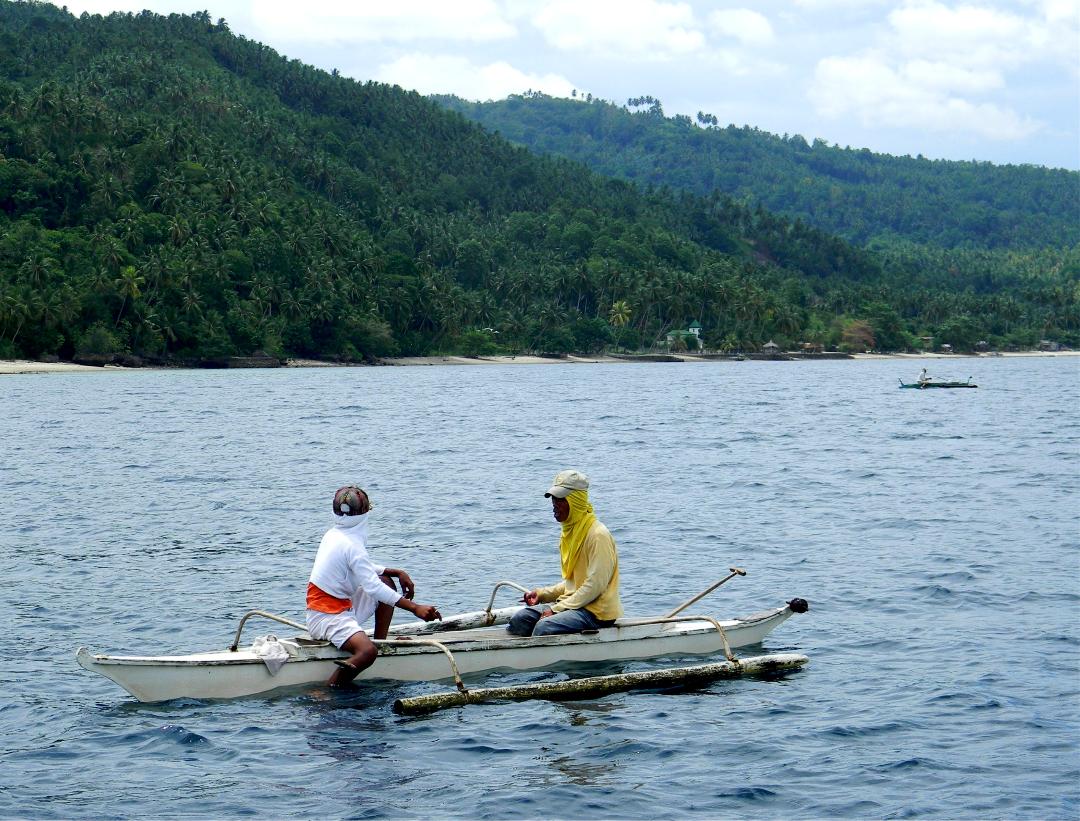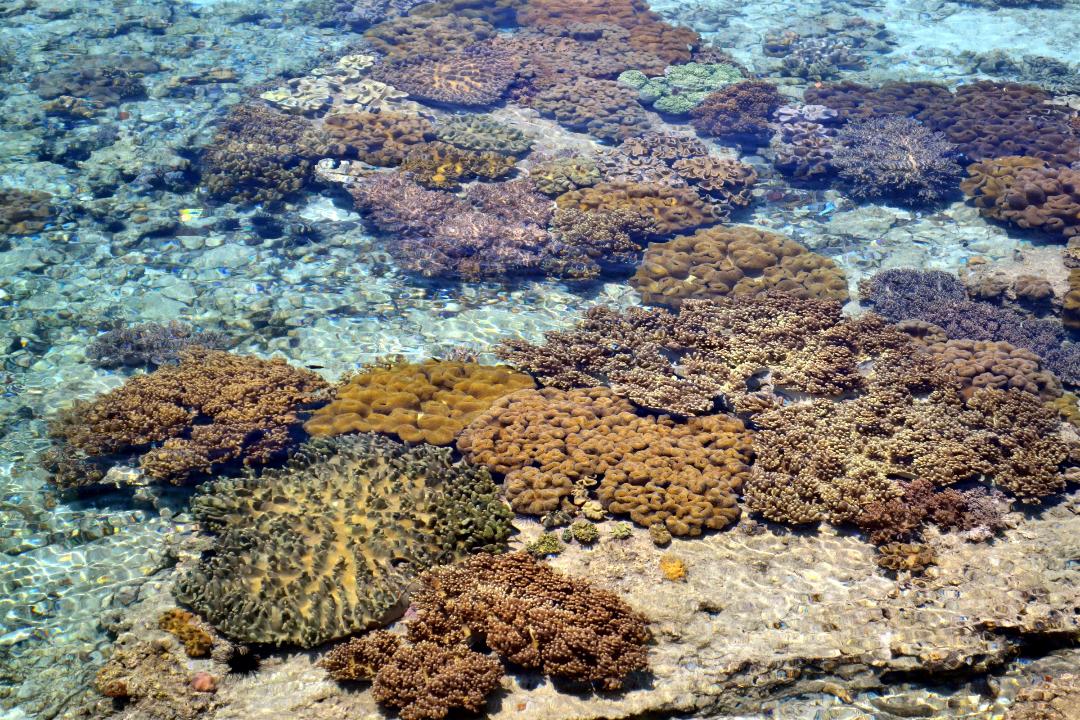The banca moves gracefully through the morning light, navigating the stunning and vibrant coral gardens that encircle Samal island in the northern region of Davao. Visitors experience an enchanting interaction with what is often referred to as the sea’s rainforest. For the guide, it serves as a livelihood, while for the reefs, it could be a matter of survival.
The Philippines has about 26,000 square kilometers of coral reefs, the second largest in Southeast Asia. It has the most diverse coral reefs in the world and is home to 500 species of Scleractinian or “stony” corals. About 12 species are endemic to the country.
Unfortunately, some of these species are on the verge of extinction.
“A dive into the depths of Samal reef gardens will reveal colorful underwater vistas with its treasure of tropical marine life,” said a foreigner who did a dive at one of the areas in the area. “But some of those colorful corals are not in good shape.”
“The Samal reef gardens offer vibrant underwater views teeming with tropical marine life,” remarked a diver who explored one of the sites. “However, some of the beautiful corals are not in good shape.”
As early as the 1990s, the Regional Fishermen’s Training Center in Panabo City reported that after a survey being conducted at Sarangani Bay and Davao Gulf (of which Samal corals are part of), it was found that most of the shallow or inshore corals “were totally damaged because they are exposed to greater pressure.”
In 2006, the regional office of the Bureau of Fisheries and Aquatic Resources (BFAR) said that over 80% of Davao Gulf’s coral reefs are already degraded. “The coral reefs in almost all areas of Davao Gulf are in bad condition,” BFAR stressed.
Only one-fourth of the coral cover was live, manta tow surveys covering 33.8 kilometers of reefs in the gulf showed. Of the 19 areas surveyed, only the corals in Tubalan Cove in Malita, Davao Occidental were in very good condition. Areas with poor values of 10% and below were found in Agdao and Valez (Toril) in Davao City.
The coastlines of the cities of Panabo and Tagum – which contain “the densest concentrations of fish larvae in the entire gulf” – fare no better. “The coral reefs, which used to be extremely rich, are already buried,” said Harry D. Morris, a British-Filipino marine biologist. “What’s left behind are mostly coral skeletons and small patches still struggling to survive.

But it’s only in Davao Gulf that this destruction is happening. The most prevalent is in the West Philippine Sea, which has over 100 reef features, encompassing an area of 37,200 square kilometers. That’s almost five percent of the world’s total reef cover. Twenty-seven of the reefs, or nearly 4,000 hectares, are controlled by China.
According to a report from Maritime Fairtrade, the majority of these occupied reefs have already suffered harm, mostly as a result of extensive gigantic clam harvesting. Over the past ten years, the coral reefs have declined by sixteen percent.
In 2019, the University of the Philippines – Marine Science Institute (UP-MSI) estimated that the country is losing about P33.1 billion annually due to reef ecosystem damage in the disputed area.
“Although coral reefs have always been subject to natural disturbances – disease, predator outbreaks, and climatic disruptions such as hurricanes and the El Niño – natural damage is now being compounded by human-induced disturbances,” reported Coral Reefs: Valuable but Vulnerable, a discussion paper circulated by the World Wide Fund for Nature (WWF).
The Philippines is home to three major types of coral reefs, said the late Dr. Angel C. Alcala, former DENR head. These are fringing type (those found on the edges of islands and which constitutes 30% of the country’s coral reefs); the barrier type (best exemplified by the Dajanon Reef of Central Visayas); and the atoll (of which the Tubbataha and Cagayan Reef in the Sulu Sea are ideal examples).
The coral reef is the world’s most diverse marine ecosystem and one of its most productive. The Philippine coral reefs, for instance, are home to 3,053 species of fish (almost one-fourth of all marine fish species) along with a vast array of other life forms.
Dynamic and highly productive, coral reefs are not only a critical habitat for numerous species, but also provide essential ecosystem services upon which millions of people depend. In the Philippines, more than 40 million people live on the coast within 30 kilometers of coral reef.
Studies show two million Filipinos depend on fisheries for employment, with about one million small-scale fishermen directly dependent on reef fisheries. In terms of productivity, good coral reef areas can produce as much as 30 tons of fishery products per square kilometer in a year, according to the late Dr. Angel C. Alcala, a marine scientist who was a recipient of the Ramon Magsaysay in 1992 for his pioneering efforts in restoring and conserving the coral reefs in the country.
Fish is the second staple food of Filipinos next to rice. On average, every Filipino consumes about 98.6 grams of fish and fish products, according to the Food and Nutrition Research Institute of the Department of Science and Technology.
“Coral reef fisheries provide livelihood for more than a million small-scale fishers who contribute almost US$1 billion annually to the country’s economy,” reports Dr. Alan T. White, author of Philippine Coral Reefs: A Natural History Guide.
Coral reefs, like mangroves, play a major role in protecting tropical shorelines from the erosive powers of storms and wave action. Under normal conditions, they act as self-repairing, natural breakwaters, which is particularly vital on coastlines that are subject to cyclones and hurricanes.
For centuries, coastal communities have used reef plants and animals for their medicinal properties. Filipinos reportedly eat giant clams as a treatment against malaria. Chemicals from sea sponges have been used in developing Ara-C, which can treat herpes and some cancers.
The prospect of finding a new drug in the sea, especially among coral reef species, may be 300 to 400 times more likely than isolating one from a terrestrial ecosystem. “Marine sources could be the major source of drugs for the next decade,” Dr. William Fenical, a natural products chemist at the Scripps Institution of Oceanography in La Jolla, California, told EDGE Davao in an exclusive interview.
The Washington-based World Resources Institute (WRI) agreed. “Many reef-dwelling species have developed complex chemical compounds, such as venom and chemical defenses, to aid their survival in these highly competitive habitats,” it explained. “Many such compounds have the potential to form the basis of life-saving pharmaceuticals.”
But the future for coral reefs in the Philippines is grim. “Nowhere else in the world are coral reefs abused as much as the reefs in the Philippines,” said marine scientist Don E. McAllister, who once studied the cost of coral reef destruction in the country.
“Human activities are the major cause of coral reef destruction,” said a document released during the International Coral Reef Initiative held in Silliman University, Dumaguete City, some years back.
The late national scientist Dr. Edgardo D. Gomez, who was a professor emeritus for marine biology at the UP-MSI, echoed the same concern. “If asked what the major problem of coral reefs is, my reply would be ‘The pressure of human populations.’”

A visit to any fishing areas near a reef will quickly confirm this. “There are just too many fishermen,” Gomez said. “They overfish the reefs, and even if they use non-destructive fishing gear, they still stress the coral reef ecosystem.”
Sedimentation, resulting from human activities, is another important cause of reef degradation. These activities include unsound agricultural and forestry practices, mismanagement of watersheds, exploitation of mangroves, earth-moving construction, and dumping of terrestrial and marine mine tailings.
In recent years, the rising levels of carbon dioxide and other greenhouse gases in the atmosphere is seen to further threaten ecologically-fragile reefs, as warming prompts coral bleaching and more acidic water slows coral growth.
“It is rare for any reef to suffer only a single threat,” the WRI said. “More often the threats are compounded. For instance, overfishing eliminates key herbivores that graze on algae, while runoff from agriculture supplies nutrients that cause algal blooms; together, these impacts reduce the abundance or impair the growth of coral. A reef left vulnerable by one threat can be pushed to ecological collapse by the addition of a second.”






